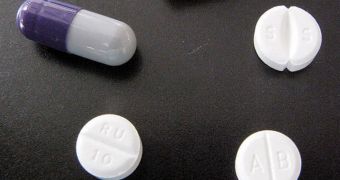Official statistics released only recently indicate that the number of attention deficit hyperactivity disorder (ADHD) diagnostics has increased by about 67 percent over the past decade alone.
The condition is most often diagnosed in children and teens, and appears to affect primarily the developed world – countries such as the United States and the United Kingdom. This study was led only on teens below the age of 18.
All participants were listed as being in the care of an office-based physician. Health data for the study group was reviewed for a period spanning from 2000 to 2010. Scientists studied both the actual diagnostics and the treatments physicians recommended.
One of the most interesting discoveries made in the new study was that a large number of the teens who were diagnosed with ADHD moved from the care of primary physicians to that of specialists. The work was carried out by experts at the Northwestern University.
According to the team, psychostimulants such as methylphenidate (brand name Ritalin) remained the most widely-used and prescribed medication for treating ADHD. However, researchers did note a small decrease in their incidence of use, from 96 percent in 2000 to 87 percent in 2010.
“ADHD is now a common diagnosis among children and teens. The magnitude and speed of this shift in one decade is likely due to an increased awareness of ADHD, which may have caused more physicians to recognize symptoms and diagnose the disorder,” says Craig Garfield, MD.
The Northwestern University expert was the lead author of a new study describing the finding, which appears in the March/April issue of the medical journal Academic Pediatrics, PsychCentral reports.
The inability to pay attention for prolonged periods of time, and the lack of control in handling impulsive behaviors are just two of the primary symptoms of ADHD, scientists say. The condition can have both academic and social repercussions on patients' lives, the team goes on to say.
The total number of teens diagnosed with ADHD increased from 6.2 million, in 2000, to around 10.4 million, in 2010. The shift that researchers are seeing, in terms of who treats these kids, may have a logical explanation.
“Recently, there’s been more public health advisories issued about problems or side effects of different ADHD medications,” Garfield explains.
“It may be that general pediatricians are shying away from treating patients themselves and instead rely on their specialist colleagues to provide the treatment and management of these medications,” he concludes.

 14 DAY TRIAL //
14 DAY TRIAL //